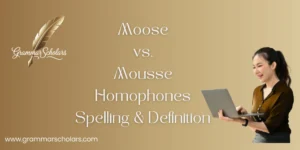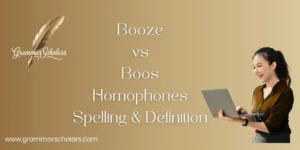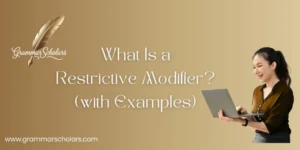The difference between brite vs. bright often creates confusion, especially for learners of English. Though the two words seem similar, their meanings, spelling, and pronunciation are distinct. As someone who’s taught students for years, I’ve seen many struggle with terms like these. It’s one of those tricky parts of language learning.
This article aims to explore how their usages have evolved, break down the etymology, and explain where each word shows up in modern contexts.
Brite, commonly used in branding or names, isn’t recognized in formal or standard writing, while bright is linked with light, intelligence, or vividness. To help others understand, I often share examples that show the correct use of each term. When we talk about subtle differences, knowing the meaning alone isn’t enough; how it’s used in speech and text matters too. Building a solid grasp of these small nuances really boosts clarity in both writing and communication.
Understanding the Meaning and Etymology of ‘Bright’
The Origin and Historical Use of ‘Bright’
The word bright has its roots in Old English, where it came from the word beorht, which meant something that was shining or luminous. Over time, it evolved into Middle English as brīghte before becoming the modern bright we use today.
This word has a long history of use, not only for describing physical light but also to describe intellectual and emotional states. For example, in early literature, someone described as bright would be understood to be intelligent or hopeful.
Primary Meanings of ‘Bright’
The word bright can be used in several contexts, but most commonly, it refers to light or intelligence. Here are the primary meanings of bright:
- Visual Brightness: The most straightforward use of bright is to describe something that emits a lot of light or has a vivid color.
- Example: “The bright sun hurt my eyes this morning.”
- Intellectual Brightness: In this context, bright describes someone intelligent or quick-witted.
- Example: “She’s one of the brightest students in the class.”
- Emotional Brightness: Bright can also describe an optimistic or cheerful disposition.
- Example: “Her bright smile cheered everyone up.”
- Figurative Brightness: We often use bright to suggest promise or hope for the future.
- Example: “He has a bright future ahead of him.”
Common Collocations with ‘Bright’
Here are a few common phrases that use the word bright:
- Bright idea
- Bright future
- Bright personality
- Bright color
These expressions are commonly used in both formal and informal settings to convey the idea of something or someone shining or standing out positively.
Correct Pronunciation of ‘Bright’
The pronunciation of bright is relatively straightforward. It is phonetically pronounced as /braɪt/ (rhymes with “fight”). When you say bright, ensure the “br” sounds are crisp, and the “i” is pronounced as a long “eye” sound.
What About ‘Brite’? Is It a Word?
Unlike bright, brite is not recognized as a standard word in the dictionary. However, this doesn’t mean you’ll never see it in use. Brite is a stylized form of bright that’s often used in brand names, marketing, and other non-formal contexts. It’s important to understand that this is not a standard English word but a creative variation intended to catch attention.
The Etymology of ‘Brite’
The word brite doesn’t have a deep historical origin like bright. Instead, it is a modern invention, often used to make a product or brand name stand out. For example, the popular children’s toy Lite-Brite is an example of how bright can be used creatively to indicate something fun and lighthearted.
Why Is ‘Brite’ Used?
The use of Brite is primarily seen in branding. By altering the spelling of bright, companies and organizations create a distinct identity. It can be catchy and memorable, which is why it’s common in the names of products, services, and even some businesses. Here are a few examples:
- Lite-Brite: A popular 80s toy where children could create pictures by placing colorful pegs into a grid that would light up.
- BriteSmile: A teeth-whitening brand that capitalizes on the idea of a bright, radiant smile.
Is ‘Brite’ Grammatically Correct?
In formal writing, brite is not correct. If you are writing an academic paper, article, or any other professional text, bright is the correct term to use. However, in certain situations-such as product branding or creative writing-brite can be used intentionally.
Comparing ‘Brite’ vs ‘Bright’
Let’s break down the key differences between brite and bright in a clear, easy-to-understand format.
| Feature | Bright | Brite |
| Standard Usage | Yes | No (non-standard, stylized) |
| Dictionary Recognized | Yes | No |
| Meaning | Luminous, intelligent, hopeful | A brand or stylized version of “bright” |
| Common Contexts | Descriptions, idioms, metaphors | Branding, product names |
| Formal Writing | Accepted | Not accepted |
While bright is appropriate in formal contexts, brite is mostly restricted to brand names, marketing, and casual usage.
Using ‘Bright’ in Sentences
Let’s look at some examples where bright is used in different contexts:
- Visual Brightness: “The bright sun made it difficult to see.”
- Intellectual Brightness: “She has a bright mind and excels in all subjects.”
- Emotional Brightness: “Her bright outlook on life inspires everyone she meets.”
- Figurative Brightness: “He has a bright future as a lawyer.”
As you can see, bright is used frequently in both literal and figurative senses. It’s a versatile word, applicable to a wide range of contexts.
Using ‘Brite’ in Sentences
Since brite is not a recognized word in formal English, you will mostly encounter it in product names or creative contexts. Here are a few examples of brite in use:
- “The Brite brand of lights is known for its energy efficiency.”
- “Lite-Brite was an innovative toy that allowed kids to create pictures with colorful pegs.”
Remember, while Brite can be used in these contexts, it is not suitable for general writing. It is not considered a grammatically correct word in formal language.
Why Do People Use ‘Brite’ Instead of ‘Bright’?
The use of brite instead of bright is mainly driven by marketing strategies and design choices. Here’s why:
- Catchiness: Shortening the word bright to brite creates a snappier, more marketable name. It’s easier to remember, which is why it’s popular in branding.
- Visual Appeal: In logos and advertisements, white looks cleaner and more modern, making it appealing for businesses.
- Domain Names: In the digital age, finding an available domain name can be challenging. Altering a word like bright to brite can help brands secure a URL or social media handle.
Examples of Brands Using ‘Brite’
- BriteTech: A technology company that aims to bring brightness and innovation to the tech world.
- BriteFuture: A non-profit organization focused on brightening the lives of underprivileged communities.
SEO Implications: ‘Brite’ vs. ‘Bright’
When it comes to SEO (Search Engine Optimization), using brite instead of bright can have both advantages and challenges. Here’s what you need to know:
- SEO Benefits: If you’re branding a product or service, using Brite might help you stand out in search results. Since it’s a less common spelling, it can help reduce competition for search terms.
- SEO Risks: On the flip side, if you’re writing a blog or article and want to attract a broad audience, using brite might confuse users who are searching for bright. It could also limit your search ranking potential for common terms related to light, intelligence, and optimism.
Final Verdict: When and How to Use Each
- Use ‘Bright’ when writing formally, academically, or when you want to describe something that emits light, is intelligent, or cheerful.
- Use ‘Brite’ in branding, product names, or other creative contexts where stylization is important. However, avoid using it in formal writing or professional communication.
Quick Reference Cheat Sheet
| Context | Correct Term | Example Sentences |
| Describing light | Bright | “The bright moon lit up the sky.” |
| Describing intelligence | Bright | “She’s a bright student with a natural gift for math.” |
| Brand/product name | Brite | “The Brite app helps you organize your tasks easily.” |
Final Thoughts
Understanding the difference between brite and bright is more than just a spelling lesson; it’s about knowing how language evolves and how context shapes usage. While bright is a versatile, widely accepted term with a rich history, brite serves a more niche role, typically seen in branding and creative contexts. By recognizing these distinctions, you can enhance your writing, use language effectively, and avoid confusion, whether you’re crafting professional content or naming a product.
Remember, clarity is key. Stick with bright for formal, everyday use, and save brite for when you’re getting creative or developing a brand identity. Keep these guidelines in mind to ensure your message always shines as brightly as the words you’re using!
FAQs
Is ‘brite’ a real word in the dictionary?
No, brite is not officially recognized as a standard word in most dictionaries. It is a stylized form of bright, often used in branding or product names, but it should not be used in formal writing or academic contexts.
When should I use ‘brite’ instead of ‘bright’?
You should only use bright in informal contexts such as branding, product names, or creative writing. If you’re writing in a formal or academic context, bright is the correct choice.
Can I use ‘brite’ in academic writing?
No, brite is not accepted in academic writing. For any formal, professional, or scholarly work, always use bright.
Why do companies use ‘brite’ in their names?
Companies often use bright colors to make their brand names more memorable, catchy, or visually appealing. It helps create a distinct identity, especially in competitive markets, and can be easier to register as a domain name or social media handle.
Is ‘brite’ used only for products, or can it describe people or things?
Brite is almost exclusively used for products, brand names, or stylized contexts. It does not describe people or things in general writing. If you want to describe a person, an object, or a quality, always use bright.











